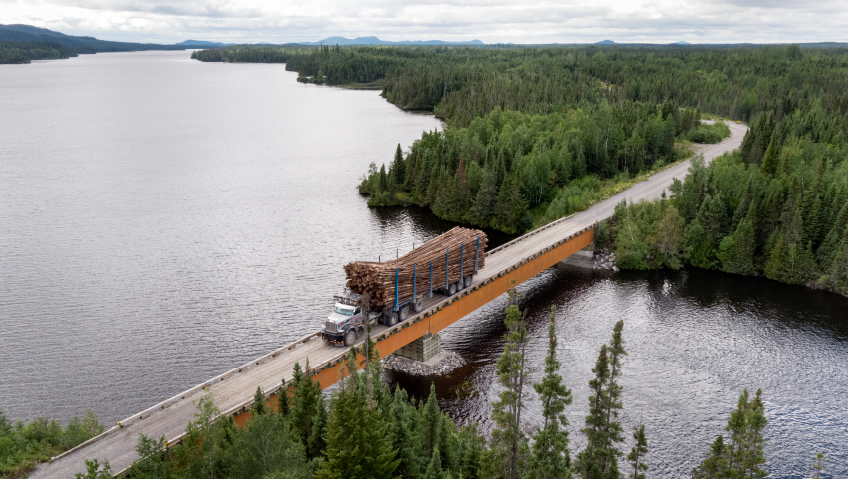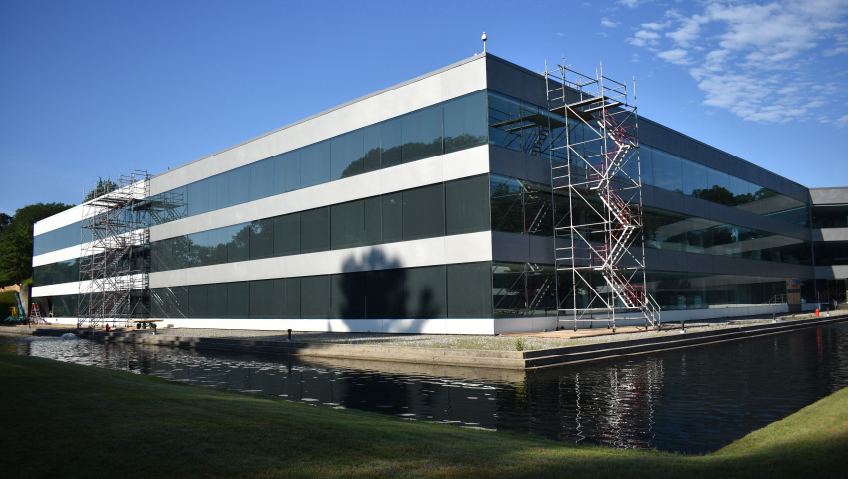After profiling the U.S. Green Building Council’s (USGBC) sustainability efforts in previous articles, Construction in Focus caught up with the organization once again, this time to learn about an exciting new report. State of Decarbonization: Progress in U.S. Commercial Buildings 2023 discusses the sector’s progress, the current status of data availability, and mechanisms available to reduce the carbon emissions of commercial buildings in the United States—the first report to compile all of this information into a single source.
“There are lots of reports and research being done, but they tend to be on a single issue or aspect of commercial building decarbonization, so this really is a data-intensive look at where we stand right now,” says Senior Policy Counsel Elizabeth (Liz) Beardsley, “and we were pleased to partner with Arup in developing this report. They have a lot of expertise and put in some of their own resources as well to make this happen.” British professional services firm Arup provides advisory, planning, design, engineering, and architecture services to clients around the globe.
Maintaining such exacting standards was not easy. “We did have a very high bar for data integrity for this report, so that posed a challenge,” Beardsley says. “Arup really worked through their process.” The result is “a high level of integrity and data quality throughout the report.”
Decarbonization is one of many aspects of green building that the council promotes. “Green building not only encapsulates decarbonization but also helps owners ensure they’re conserving and protecting their water resources, their health, their indoor air quality, considering biodiversity, and a number of other outcomes that really matter to companies and to people,” she says. “So, this report focuses specifically on decarbonization, but in our view, decarbonization and green building go hand-in-hand.”
The construction sector has an enormous impact when it comes to carbon emissions. “The total of the upfront emissions from building materials [to] energy used at the construction site is estimated at as much as six percent of the total U.S. greenhouse gas emissions per year,” she says. “That’s a huge number and very significant.”
The 95-page report covers a tremendous amount of material—far more than can be touched on here. “If people want to inform themselves about what the opportunities are and where we are, they really need to look through the report,” says Beardsley.
Overall, the report brings encouraging news. “First of all, it finds that we are making real progress,” she says. “Today, U.S. commercial buildings are 37 percent less carbon-intensive and 26 percent more energy-efficient on a per-square-foot basis compared to 1990, and absolute emissions from commercial buildings have declined to their lowest level since 1990, and that’s happened alongside a 55 percent increase in commercial floor area. So, we have increased space, but improved efficiency. There has been some reduction in commercial building emissions as an absolute number.”
The report also identifies ongoing challenges. “What we also find is that we’re still pretty far from our targets,” says Beardsley, “and so the report looks at some of the drivers behind improvement and some of the projections going forward.”
One important finding is that progress is occurring “unevenly across the sector, both geographically and socioeconomically, with higher barriers in historically disadvantaged communities,” she says. “So that’s an area that we need to continue to work on collectively and strengthen climate equity.”
The report identified some prime opportunities for the sector. “For example, older commercial buildings—built before 1980—which have not yet received a major retrofit, account for nearly 40 percent of the gross commercial floor area in the U.S.,” she says, noting that, “these projects are well positioned to take advantage of the commercial energy efficiency tax deduction in the Inflation Reduction Act, which the report highlights as a key lever for decarbonization. So focusing on some of those older buildings is one way to make further progress.”
The Inflation Reduction Act (IRA) is “an unprecedented investment” ready to be tapped into, but the sector needs to be educated about this opportunity to fully make use of it. “Some of the key building provisions are in the form of tax incentives. Those incentives don’t work without participation.”
People throughout the sector can take advantage of these incentives. “There are opportunities across all geographies and socioeconomic categories to participate and to tap into the funds.” Fully utilized, this participation could make a real impact. “If the IRA program realizes a high level of participation, it could enable the building sector to meet its proportional share of the U.S. Paris target before 2030.”
Continuing to promote LEED is another key strategy. “The report also finds that proven decarbonization strategies and technologies that we’ve long championed at USGBC through LEED have become more available and cost-competitive,” Beardsley explains. “So that also helps to drive future improvement.”
Real estate investment trusts (REITs) can also help drive future improvement. “We were fortunate to get data from [the National Association of Real Estate Investment Trust] and to do some analysis and find that about one quarter of the largest commercial real estate investment trusts are making serious, science-based commitments toward decarbonization,” she says, “and over time, those commitments will translate into implementation of decarbonization strategies across their portfolios and will likely also influence their peers.”
This could be a great opportunity, particularly for REITS in areas that are farther behind in meeting decarbonization goals. “They have the chance to be leaders in decarbonization in their individual markets,” Beardsley points out. These REITs “are not only in the major cities, but they’re all over the country, and they can demonstrate—particularly in the midsize and smaller cities and even suburban and rural areas—what’s possible and try to bring that practice to those areas.”
The report found that large corporations are stepping up to do their part as well. “We also have seen a huge increase in the Fortune Global 500 companies that have published greenhouse gas reduction targets,” she says. “This has gone from six percent in 2016 up to 68 percent in 2022, a tenfold increase in eight years.” This is promising because “those targets will eventually work their way down to the buildings and result in corporations investing in improving those buildings in terms of emissions.”
The report also looks at energy codes and how they will apply to new construction. “Buildings constructed in 2023 are expected to be 15 percent more energy-efficient than those built in 2017,” Beardsley says. “However, almost half of new commercial area expected in the next four years will be no more energy-efficient than the 2013 standard. So there is this uneven progress as some states have not updated their codes in a number of cycles, and some of those states correspond with where there’s heavy anticipation of new construction of commercial buildings. So that is an area for improvement.” Fortunately, however, “it can be addressed through better strategies that are available now.
“The report shows that we can absolutely make progress,” she continues. “But there’s much more to be done. We know that there are strategies that are underway, and the report reflects that. For example, some of the states are already underway in decarbonizing their electric grid, adopting energy codes, and using benchmarking policies, but there’s still opportunity to expand those types of policies and programs across the other states.”
The tools are already in place to make the difference needed. “The fact is, we have the technologies we need, and it’s absolutely possible to have zero-emission buildings today,” says Beardsley. With the opportunities afforded by the Inflation Reduction Act and modern building codes, “it’s really a question of getting deployment, participation, and implementation out there. So things are going in the right direction, and we just need to scale up all of these opportunities.”
As USGBC steers the industry forward, there is good reason to believe that the sector can—and will—fully take advantage of these opportunities in the future.






